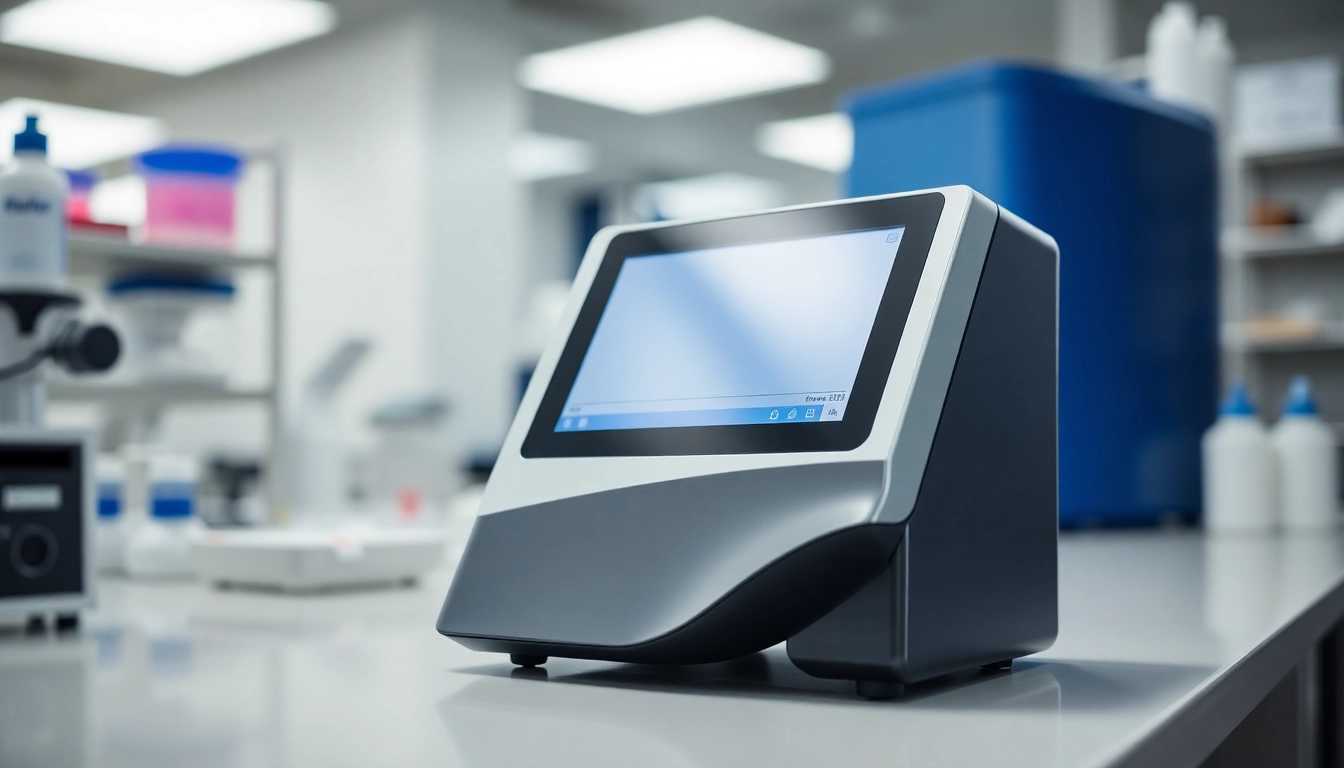Understanding the Bruker EOS 500 Handheld LIBS Analyzer
The Bruker EOS 500 Handheld LIBS Analyzer represents a significant advancement in material analysis technology. Utilizing Laser-Induced Breakdown Spectroscopy (LIBS), this portable device offers unprecedented analytical capabilities for professionals across multiple industries. With increasing demands for quick, accurate, and non-destructive testing methods, the Bruker EOS 500 Handheld LIBS Analyzer stands out as a state-of-the-art solution designed to meet those needs.
What is Handheld LIBS Technology?
Laser-Induced Breakdown Spectroscopy (LIBS) is a powerful analytical technique that uses a focused laser pulse to create a micro-plasma on the surface of a material. The plasma generates light at characteristic wavelengths, which is then analyzed to determine the elemental composition of the sample. Handheld LIBS analyzers, such as the Bruker EOS 500, combine this sophisticated technology with portability, allowing users to conduct analyses in various environments and applications without the need for bulky laboratory equipment.
Key Features of the Bruker EOS 500
The Bruker EOS 500 is equipped with numerous features that enhance its functionality and user experience:
- Portability: Designed for field use, its lightweight and ergonomic design makes it easy to carry and operate in various settings.
- Real-Time Analysis: The device provides immediate results, facilitating expedited decision-making in critical scenarios.
- User-Friendly Interface: An intuitive touchscreen interface simplifies operation, allowing users to navigate through functions with ease.
- Versatile Application: Capable of analyzing a wide range of materials including metals, plastics, and minerals.
- High Sensitivity: The LIBS technology utilized in the EOS 500 allows for the detection of trace elements, making it suitable for diverse analytical needs.
Applications Across Industries
The versatility of the Bruker EOS 500 enables its application across various sectors:
- Mining and Mineral Exploration: Used for rapid analysis of ore samples to determine mineral composition and value.
- Metal Recycling: Efficiently identifies metal types and grades, optimizing recycling processes.
- Environmental Monitoring: Suitable for assessing contamination in soils and waste, ensuring adherence to safety regulations.
- Chemistry and Material Science: Employed in research for material characterization and analysis.
- Quality Control: Helps manufacturers ensure product quality through material verification during production processes.
Benefits of Using the Bruker EOS 500 in Material Analysis
Speed and Efficiency in Testing
One of the most significant advantages of the Bruker EOS 500 is its speed. Traditional analytical methods can take hours or even days to produce results. In contrast, the handheld LIBS analyzer enables onsite analysis in seconds, which is crucial for operations that rely on rapid decision-making. This immediacy not only enhances workflow but also minimizes downtime, resulting in improved overall efficiency.
Improved Accuracy and Precision
The accuracy of elemental analysis is paramount in various industries. The Bruker EOS 500 utilizes robust calibration procedures and state-of-the-art optics to achieve high levels of precision in its readings. This ensures that users can trust the results for critical applications, ranging from quality assurance in manufacturing to compliance testing in environmental sectors.
Cost-Effectiveness in Operations
Investing in a Bruker EOS 500 can lead to significant cost savings over time. The ability to conduct analyses on-site reduces the need for sending samples to external laboratories, thereby saving both time and money. Moreover, the device’s efficiency leads to lower operational costs by streamlining processes and minimizing material waste through accurate composition analysis.
How to Operate the Bruker EOS 500 Handheld LIBS Analyzer
Basic Setup and Calibration
Operating the Bruker EOS 500 begins with a proper setup. Start by charging the device and ensuring it has all necessary accessories, such as sample holders or protective covers. Calibration is critical to achieving reliable results; users should follow the manufacturer’s guidelines to calibrate the device with standard reference materials. This process ensures that it provides accurate readings across different materials and conditions.
Sample Preparation Techniques
While the Bruker EOS 500 is designed for ease of use, proper sample preparation can significantly impact the accuracy of the analysis. Users should ensure that samples are clean and representative of the material being tested. For metallic surfaces, a polished finish can help achieve better results by providing a uniform surface for the laser to interact with. For non-metallic materials, ensuring the sample is stable during analysis is essential.
Interpreting Results Effectively
The analyzer displays results on a built-in screen, presented as elemental composition in both qualitative and quantitative formats. Understanding these results is crucial for making informed decisions. Users should familiarize themselves with the output formats and, if necessary, consult additional resources or training provided by Bruker to interpret complex analyses accurately. Moreover, integrating findings with existing data can help contextualize results within broader operational frameworks.
Comparing the Bruker EOS 500 with Other Analyzers
Feature Comparison: Bruker EOS 500 vs Competitors
The Bruker EOS 500 excels in comparison with other handheld analyzers on several fronts. Key differentiators often include its advanced optics, ease of use, and specialized features tailored for diverse industries. While some competitors may offer lower upfront costs, the overall value of the EOS 500 is revealed in its durability, accuracy, and the comprehensive support provided by Bruker, including software updates and training resources.
User Feedback and Reviews
User experiences often highlight the practical advantages of the Bruker EOS 500, particularly in terms of its user interface and rapid analysis capabilities. Many users appreciate how straightforward the device is to operate, even for those without extensive technical training. Reviews frequently emphasize the reliability of results, which can be a determining factor when selecting an analyzer for critical operations.
Pricing and ROI Analysis
While the initial investment for a Bruker EOS 500 may be higher than some competitors, a comprehensive return on investment (ROI) analysis often reveals significant savings over time. By providing rapid onsite analysis, reducing the need for lab testing, and increasing operational efficiency, users can anticipate a favorable ROI. Additionally, the durability and reliability of the device contribute to long-term savings as it minimizes maintenance costs associated with less robust models.
Future Trends in LIBS Technology
Emerging Applications for Handheld LIBS
As technology advances, the applications for handheld LIBS analyzers are expected to expand significantly. Innovations may lead to new markets, such as food safety testing, where quick verification of food compositions can play a vital role in safety compliance. Additionally, sectors like pharmaceuticals may begin incorporating handheld LIBS in their quality assurance processes, providing further avenues for growth.
Advancements in Analyzer Design
The future of handheld LIBS technology will likely focus on improvements in design, enhancing factors such as portability, battery life, and ease of use. Manufacturers may integrate more robust wireless connectivity options, allowing devices to communicate with mobile applications or cloud databases for real-time data analysis and storage.
The Role of AI in Material Analysis
Artificial intelligence is poised to revolutionize the field of material analysis, including LIBS technology. Future analyzers could leverage AI algorithms for enhanced pattern recognition, enabling them to provide more detailed insights into sample analyses. This could lead to smarter devices capable of learning user preferences and automating routine tasks, thus freeing users to focus on complex analysis and decision-making.



